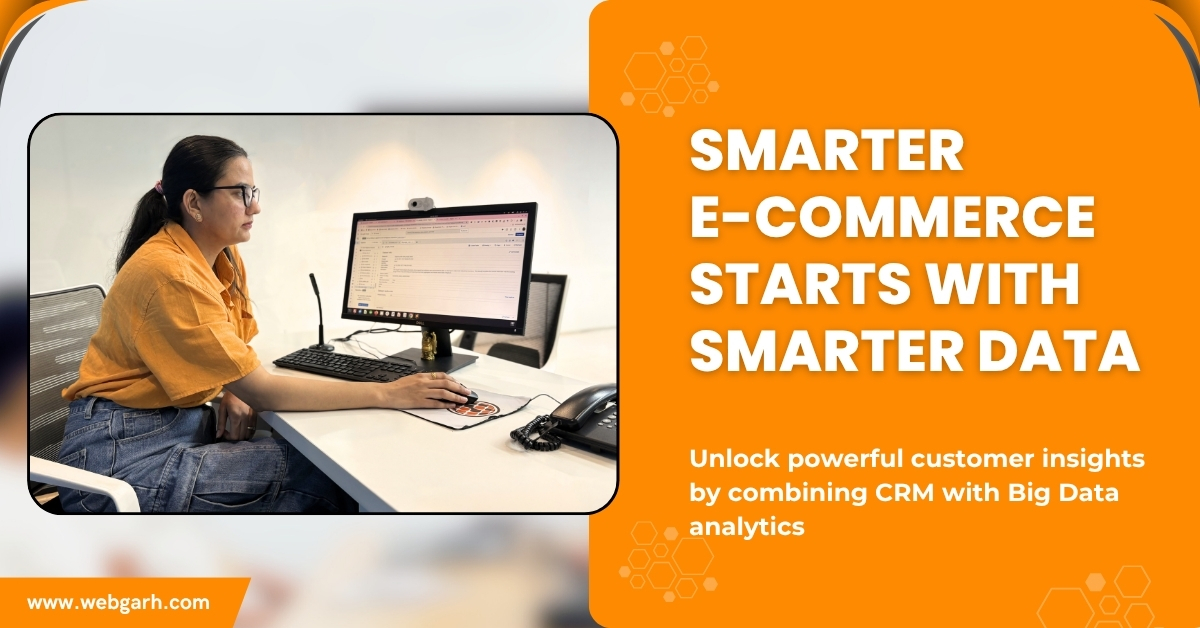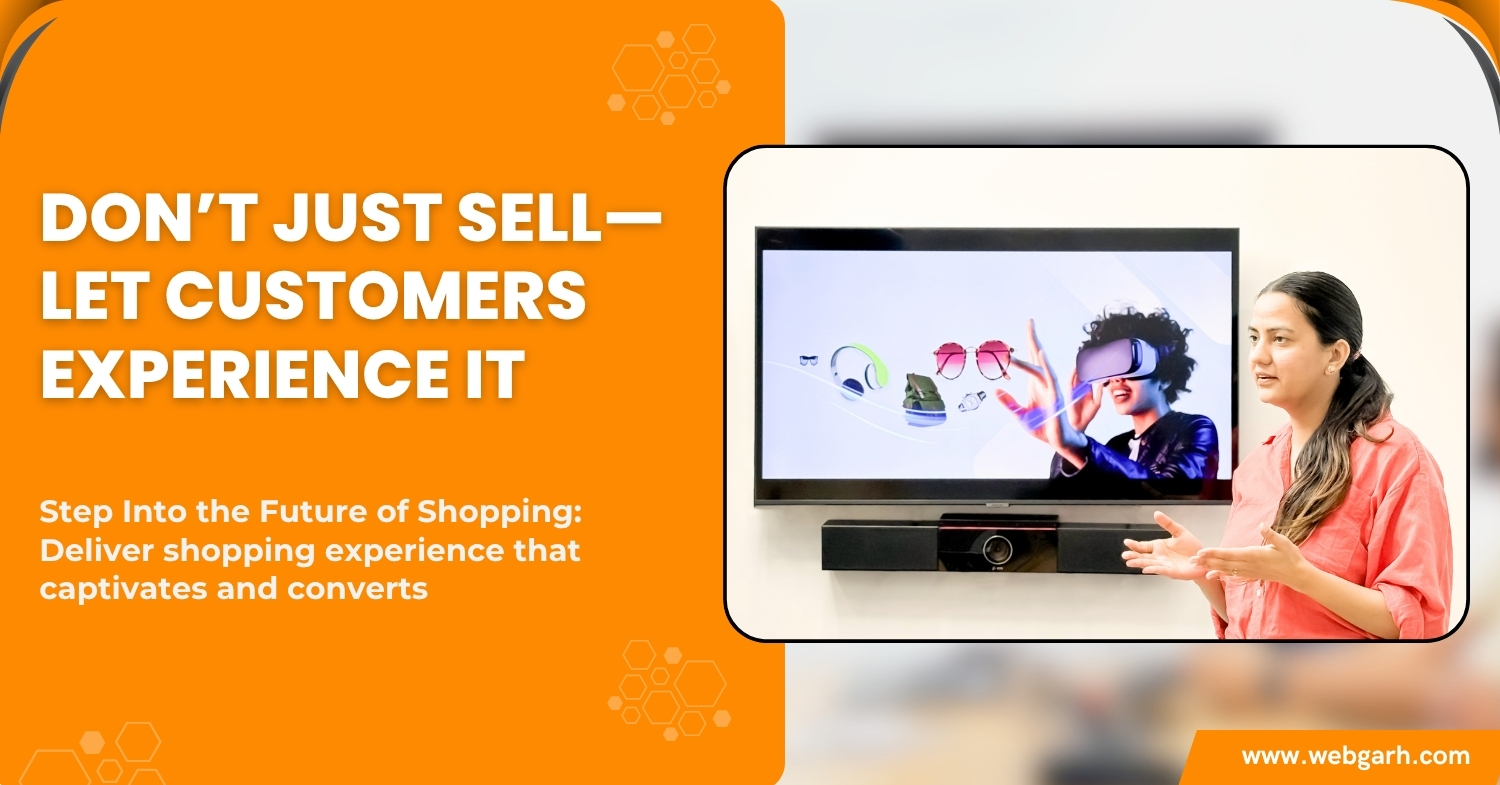How CRM and Big Data Analytics Are Revolutionizing Customer Insights in E-commerce
Are you still relying solely on your CRM to understand your customers?
If yes, you’re only seeing half the picture.
In the ever-evolving world of e-commerce, customer expectations are no longer shaped by just convenience—they’re driven by personalization, real-time responsiveness, and intelligent engagement. That’s where the powerful combination of CRM and Big Data comes into play.
This blog is part of our ongoing weekly series on E-commerce Trends & Strategies. Last week, we explored The Top VR Trends That Will Shape E-commerce This Year. This week, we’re diving deep into how businesses can unlock actionable customer insights by merging CRM systems with Big Data analytics—a move that’s transforming how customer relationships are managed.
So, whether you’re an e-commerce brand, marketer, or tech lead, this post will help you bridge the gap between customer relationship management analytics and data-driven decisions.
Why CRM Alone Isn’t Enough Anymore
Traditional Customer Relationship Management (CRM) tools were designed to store customer data, manage interactions, and streamline sales pipelines. While they’ve helped businesses stay organized, they’ve hit a limit.
In today’s dynamic e-commerce environment, CRM alone can’t uncover deep, behavioral insights that drive personalized experiences.
Here’s why CRM by itself is falling short:
- It relies heavily on historical and structured data like contact details, purchase history, or email logs.
- It doesn’t provide real-time behavioral data, such as how users interact with your site, what they abandon in carts, or how they react to price changes.
- It’s reactive, not predictive. Without broader data inputs, a CRM system can only reflect what has happened, not what might happen next.
This is where Big Data steps in.
By combining CRM and Big Data, businesses can:
- Access a 360-degree view of customers across all touchpoints
- Merge structured CRM entries with real-time, unstructured behavioral data
- Evolve from data collection to data-driven decision-making
Big Data analytics doesn’t replace your CRM — it supercharges it.
It transforms your customer relationship management dataset into a living, intelligent source of insight.
How Big Data Complements Traditional CRM Systems
Traditional CRM platforms are excellent at capturing structured data—names, emails, orders, and service logs. But that’s just one layer of the customer story. To fully understand behavior, intent, and trends, businesses must combine CRM and Big Data for deeper insight.
Big Data analytics enhances CRM systems by unlocking patterns hidden within unstructured data, such as:
- Clickstream behavior on websites and mobile apps
- Social media interactions and sentiment
- Customer service chat logs and voice transcripts
- Real-time location data or IoT sensor feedback
By integrating Big Data, CRM becomes predictive rather than reactive. Businesses can begin to forecast actions, automate decision-making, and engage customers in real time.
We help businesses implement intelligent CRM systems powered by Big Data analytics, giving them the edge to operate smarter and connect deeper.
Key Benefits of Integrating Big Data With CRM
Integrating Big Data with your CRM system unlocks powerful benefits that directly impact customer engagement and business growth. This fusion transforms how companies interpret their customer relationship management dataset and leverage it for strategic advantage.
Here are the key advantages:
- 360-Degree Customer View: By combining traditional CRM data with diverse sources of Big Data, businesses gain a complete picture of customer behavior across all touchpoints. This holistic view enables better understanding and anticipation of customer needs.
- Personalization at Scale: Big Data allows for highly targeted messaging, going beyond generic campaigns. It enables brands to deliver personalized offers, content, and experiences that truly resonate.
- Predictive Analytics for Retention: Using historical CRM records alongside real-time data, companies can forecast customer churn and proactively engage users to improve loyalty.
- Enhanced Lead Scoring and Sales Funnel Optimization: Analytics enrich lead profiles with behavioral insights, helping sales teams prioritize prospects and tailor their approach for higher conversion rates.
This integration represents a vital evolution in your CRM data strategy.
It equips businesses to move beyond static reports toward continuous, actionable intelligence — a game-changer in competitive e-commerce landscapes.
Use Cases – Big Data and CRM in Action
Understanding how CRM and Big Data analytics work together is easier when you see real-world applications. These use cases demonstrate how combining these technologies drives smarter decisions and better customer experiences.
- Customer Journey Mapping: By analyzing diverse data points, companies can visualize how customers move through different stages — from discovery to purchase and beyond. This helps optimize touchpoints and reduce friction.
- Dynamic Segmentation for Campaigns: Traditional static segments are replaced by dynamic groups based on behavior, preferences, and purchase history. This ensures every marketing message hits the right audience at the right time.
- Sentiment Analysis for Support and Engagement: Big Data tools can analyze social media posts, reviews, and customer feedback to gauge sentiment. Integrating this insight with CRM helps tailor responses and improve satisfaction.
- AI-Powered Recommendations: Leveraging purchase histories and browsing patterns, AI algorithms suggest personalized products and offers, enhancing cross-sell and upsell opportunities.
These examples highlight how a customer relationship management dataset, when combined with Big Data, evolves from simple records into a powerful tool for growth and loyalty.
Challenges in CRM-Big Data Integration
While the synergy of CRM and Big Data integration offers remarkable opportunities, it also comes with its own set of challenges. Recognizing and addressing these hurdles is essential to harnessing the full potential of your customer data.
- Data Silos and Legacy Infrastructure: Many organizations struggle with disconnected systems. Legacy CRM platforms often don’t seamlessly connect with modern Big Data tools, creating fragmented data landscapes that limit insight.
- Privacy Concerns and Data Governance: Handling vast amounts of customer data raises important privacy issues. Complying with regulations like GDPR and ensuring transparent data policies is critical to maintain trust.
- Interpreting High-Volume Data Effectively: The sheer scale of Big Data can overwhelm teams. Without clear strategies and tools, extracting meaningful patterns from massive datasets becomes difficult.
Overcoming these challenges requires a well-planned CRM data strategy, strong technology partnerships, and continuous training to foster a data-driven culture.
Best Practices for Merging Big Data with Your CRM
Integrating Big Data with your CRM requires a strategic approach to unlock meaningful insights and avoid common pitfalls. A solid CRM data strategy lays the foundation for success.
Here are the key best practices to consider:
- Define Clear Data Goals and KPIs: Start by identifying what business outcomes you want to achieve. Whether it’s improving customer retention or boosting sales, clear metrics guide your analytics efforts.
- Choose the Right Tech Stack and Tools: Select platforms that support seamless integration between CRM and Big Data systems. Look for scalability, flexibility, and strong data security features.
- Ensure Data Quality and Clean Architecture: Accurate insights depend on clean, consistent data. Regularly audit and cleanse your datasets to prevent errors and duplication.
- Train Teams for a Data-Driven Culture: Equip your staff with the skills and mindset needed to leverage data effectively. Collaboration between marketing, sales, and IT is essential.
By following these practices, you can transform your customer relationship management analytics into a powerful engine for growth and innovation.
We help businesses design and implement CRM systems that are deeply integrated with Big Data. Want to know more?
Future Trends – Where Is CRM + Big Data Headed?
The intersection of Big Data analytics and CRM is evolving rapidly, shaping the future of customer engagement in exciting ways. Staying ahead means embracing emerging technologies and shifting expectations.
Here are some key trends to watch:
- Hyper-Personalization with Generative AI: Advanced AI models will enable brands to create highly tailored experiences at scale, going beyond basic segmentation to predict and serve individual preferences in real time.
- Voice and Visual Data Integration: Future CRM systems will increasingly incorporate voice commands and visual recognition data, providing richer context and more intuitive customer interactions.
- Real-Time Sentiment Feedback Loops: Monitoring customer emotions through social media and direct feedback will become instantaneous, allowing businesses to adapt messaging and support dynamically.
These innovations will further enhance the depth and accuracy of your CRM analytics, driving smarter strategies and stronger connections.
Conclusion – Building Smarter Relationships with Data Power
Unlocking the full potential of your customer data through CRM and Big Data integration is no longer optional—it’s essential for thriving in today’s competitive market. Moving from basic customer info to advanced customer relationship management analytics empowers businesses to deliver personalized, timely, and relevant experiences.
At WebGarh Solutions, we specialize in crafting tailored CRM data strategies that help e-commerce brands harness Big Data’s power to build stronger, smarter customer relationships.
Ready to transform your CRM into a dynamic growth engine? Contact us today and let’s unlock your customer insights together.





















